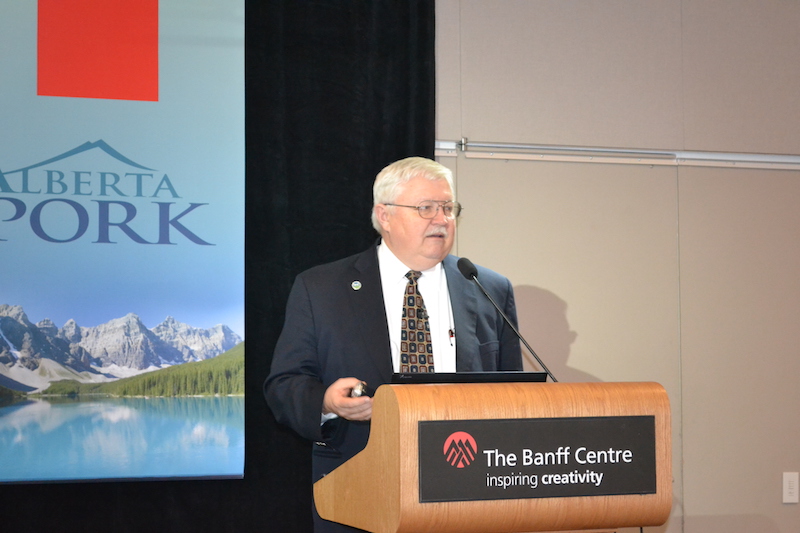In light of the United States Secretary of Agriculture Tom Vilsack is finally realizing there is more to the WTO ruling on M-COOL, after three times coming out on the losing end, others are saying they told the USDA so right from the beginning.
Steve Meyer, president of Paragon Economics says in defence of Mr. Vilsack he’s charged with enforcing the law that the U.S. congress passed argues the law congress did pass isn’t a very good one.
“They finally came to the conclusion they may not be able to write a rule that agrees with the law and the WTO which we’ve contended from the beginning,” said Meyers. “That means we have to change the law so congress will have to act to get us out of this pickle. If you can’t write a rule that satisfies the WTO and meets the letter of the law then you have to change the law which most of us who opposed the rule contended from the beginning as well.”
He says the chances of that happening are probably better given the Republican majority in the Senate after in January.
“My guess is it will be the 11th hour before they take any action on it and I don’t know exactly what action they will take either,” Meyer says. “I think they will probably go through with that appeal and if nothing else it will buy a little more time for congress to figure out what to do.”
He says it isn’t all bad. If the choice is doing something stupid quick or doing something smart a little later, he’d rather have them do something smart a little later.
When asked if the PED virus is on the back burner in the U.S., he says they don’t know that. “We will know a whole lot more three or four weeks from now because of this cold snap and this snow that hit the cornbelt the last couple of weeks,” Meyer says. “We already had some finisher barns breaking with PEDv but no sow units as of Nov 20. There is lots of virus available and the conditions for tracking that around are much better than they were a month ago. We are right on the crest knowing what we are dealing with.”
He says the industry is a little concerned seeing a jump in the number of cases in Oklahoma and Kansas the last couple of weeks, but too early to tell what will happen in the cornbelt.
“Last year it turned cold on Oct 31, and in two weeks we had cases going up rapidly this year it turned cold two weeks later,” he said.
The good thing is people are taking more precaution, hopefully tightening up their bio-security protocols, treating their sow feed with certain products to combat the spread of the PEDv.
“We are doing a lot of things this year that we didn’t know to do last year,” said Meyer. “That should help, but we don’t know that for a fact yet, we need to get into position to challenge that before we can figure that out completely.”
On what is happening in meat supplies, Meyer says it was another month of lower beef and pork production.
“We keep hearing that speculators are responsible for driving up beef and cattle prices,” he said. “But the reality is this price action simply reflects a dynamic whereby the U.S. and world consumers are clamoring for more beef (low carb diets are all the rage) while at the same time, beef production has declined for the last three years.”
Meyer says a sharp drop in hog numbers compounded the drop in cattle slaughter. And while overall pork production may not have declined as much, it is important to recognize how the producers achieved the heavy carcass weights and the additional pork pounds.
“Producers last spring and summer deliberately slowed down the flow of hogs to market order to feed them to heavier weights, reducing weekly hog availability and forcing packers to pay up to secure supplies,” he adds. •
— By Harry Siemens




